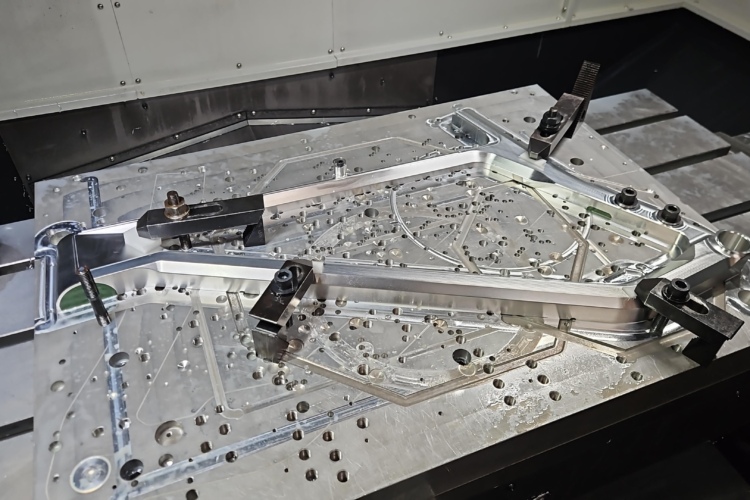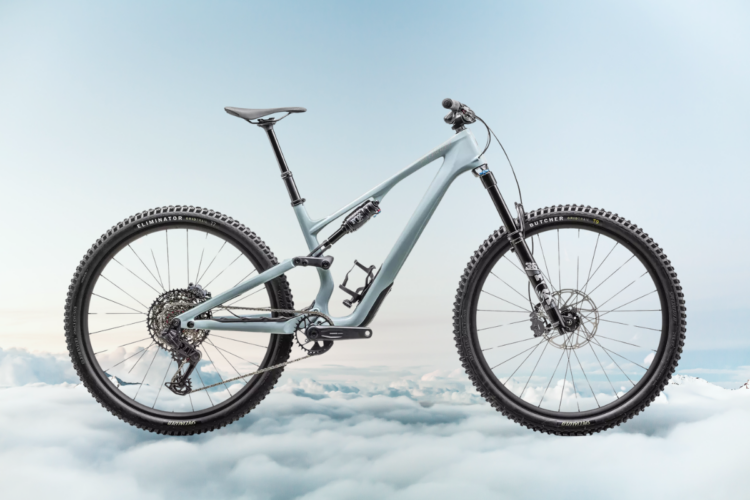With so many new fat bikes hitting the market, what makes one bike stand apart from the competition? Is it a unique design, construction, parts spec, or something else? With the Chumba Ursa Major fat bike, all of these factors combine to create a unique ride.

All bicycles from Chumba are hand-built in the USA, so you know that the bike you’re receiving when you buy a Chumba is high-quality and supports American jobs. The Chumba Ursa Major is currently only available with a steel frame, but if Chumba’s previous production trends are any indication, we could see this bike in titanium very soon.
During my test ride right here in the Arkansas Valley in Colorado, I pedaled a version of the Ursa Major similar to the Trail Pro model, which retails for $3,495. There were some spec differences between my rig and the Pro model, so if you want to build up your fatty just the way you want it, be sure to go with the frame-only choice for $1,095.

Frame details from Chumba:
- Made in USA
- CHUMBA USA Select Steel, ovalized chainstays and oversized tubes, bent downtube gives plenty of room for a Bluto fork in 360 degrees.
- English threaded 100mm Paragon Machine Works Bottom Bracket.
- Oversized 44mm headtube fits tapered forks.
- Paragon Machine Works stainless steel sliding dropouts
- 4″ – 5″ Tire compatible, offering one of the shortest steel chainstay lengths out there for both tire sizes, 435mm with a 4.0 tire and 455mm with a 5.0 tire
- Short chainstays are best for snow riding giving more traction in the snow and more balance. They also happen to be more fun for trail riding on a 26″ fatbike.
- The frame can be used with 190 Quick release hubs or 197 thru axle hubs, depending on the chosen insert.
Trail Pro component highlights, from Chumba:
- Hope Fatsno 197x12m x 150x15mm hubset
- Sun Ringle Mulefut 80SL Tubeless Compatible Rims
- RaceFace Turbine Cinch 30 crankset w/narrow wide ring
- RaceFace Turbine oversized 35mm cockpit
- Shimano XT M8000 11 speed drivetrain
- Shimano XT M8000 hydraulic brakes (can be substituted for BB7s to Paul Love Levers for snow riding)
- Maxxis Mammoth 4.0″ 120TPI folding tires with EXO sidewall protection or Maxxis Minion FBF/FBR 4.0″ folding tires
Out on the trail, the short rear end and the quick handling characteristics were immediately apparent. The Chumba Ursa forsakes the long rear ends of older generation fat bikes for a snappy rear end that provides serious handling benefits, both on dry dirt and on the snow. Not only does a short, snappy rear end allow for maneuverability in tight singletrack, but it brings the rear wheel as close to directly below your body weight as possible, providing optimum traction in soft conditions.

Normally when I hear “short rear end” in relation to a fat bike or a plus bike, I immediately think “calf-bang.” However, I barely experienced any calf-bang whatsoever aboard the Ursa Major–only a little when getting way behind the bike on technical descents. I gave the Ursa a 1 out of 10 on my calf-bang factor scale–it’s currently tied with one other 5″ fat bike, the Scott Big Jon, for the best calf-bang rating that I’ve given to a 5″-tired fat bike. When I spoke with Vince Colvin of Chumba about my calf-bang theories, he mentioned that they specifically tested the Ursa Major in all frame sizes, and with all types and heights of riders, to avoid just such an issue–as well as heel-bang, which many taller riders report on other fat bikes from other brands. Chumba has no patience for an uncomfortable ride on any of their bikes, and they won’t stand for a rider’s body hitting the frame. Their diligence and thorough testing has paid off, and I can unequivocally recommend their fat bike in this respect.

The frame construction was on-point, with a beautifully-welded steel frame, well-thought-out dropouts, and excellent bolt points for racks, cages, and frame bags. Also, since Chumba and Wanderlust are owned by the same company, Wanderlust produces frame bags that are designed to fit the Chumba Ursa frame perfectly. I tested a Wanderlust setup on the Ursa Major, and the fit was perfect, construction was excellent, and the storage capacity seemed very liberal for the size of the bag.


Most of the components on this bike are pretty self-explanatory, but of note were the brand-new Maxxis Colossus 5″ fat bike tires that were mounted on my test rig. Not only did these tires perform great in the snow (their intended purpose), but they handled predictably with little to no auto steer in dry, hardpack conditions. It’s a challenging feat to be able to tackle both snow and dry conditions well with the same tire, but Maxxis has achieved just such a feat with the Colossus!


Paul Love Levers
With top-notch construction, excellent handling, no calf-bang issues, and a top quality component spec, what’s not to love about the Chumba Ursa Major? Since I have to complain about at least one thing in every review, I will note that the brakes on my bike were not the hydraulic Shimano XT brakes, but rather the mechanicals that are mentioned as an option on Chumba’s website: “can be substituted for BB7s to Paul Love Levers for snow riding.” While I love Avid BB7 brakes, I now know that I hate Paul Love Levers with a burning, fiery passion. Seriously, I thought we were about two decades beyond riding mountain bikes with ineffective brakes, but these were hands-down the absolute worst brake levers I have used in my entire life, including Y brakes, cantis, road bike brakes, coaster brakes–you name it. I have had better luck with the cheapest of cheap mechanical levers from both Shimano and Avid.

The Paul Love Levers are uncomfortable, with an awkward design that fits the finger not at all. The reach was way too long for my hand, with no easy adjustment option. The adjustment option that was available basically worked by lengthening the cable, and allowing the lever to pre-pull some of the cable, so that the lever would sit closer to the bar. However, that leads to another issue: even with a full lever pull, I felt like I had next to no power and negligible control over the brakes. The feel of the pull was wonky, with a creaking sound from the cable and a very high level of effort required (even when using the two or three fingers that Paul recommends). This difficulty all around led to very little brake control, modulation, or power.

Let’s talk about the general concept of a two or three finger lever pull, shall we? Now perhaps if you’re riding with a pair of cold weather lobster claw gloves, you’ll need to put two fingers on the lever since they’re combined into the same glove finger. But you can fit two fingers even on standard levers. However, using any more than one finger, unless you have to due to the gloves you’re wearing, is a horrible idea and just shouldn’t be necessary. A quality brake and lever should give you plenty of power with just a single finger pull, and taking more fingers off the bar than necessary reduces your control over the bike drastically. And taking three fingers off to pull the brake–are you kidding me? So you’re telling me that on a descent, when you need to brake the most and you consequently need maximum control, you’ll be stabilizing the handlebar solely with your pinky finger and your thumb? Good luck with that!
Simply put, I don’t understand why this product exists. Do yourself a favor and go with the XT version on the Chumba Ursa Major, or simply get a set of BB7s with Avid’s own brake lever.
Aside from the braking issues, I was in love with the Chumba Ursa Major. And remember, if you want maximum control over your component choices, you can always buy a frame-only and build it yourself.
Stay tuned for a longer term review, coming soon!











1 Comments
Dec 26, 2017